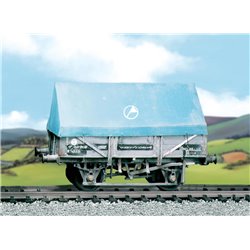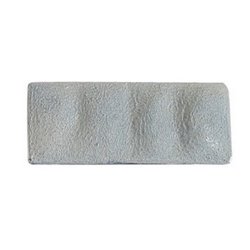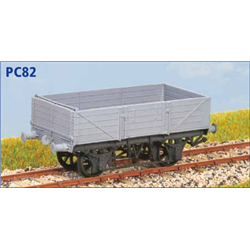There are a number of different options for attaching figures such as a horse and rider to a layout. Perhaps the...
Product successfully added to your shopping cart
There are 0 items in your cart. There is 1 item in your cart.
- Home
- N gauge
- Model kits
- Other scales
- Any scale
- Bargains
- OO gauge
- Wargames
- OO gauge
- N Gauge
- Other Scale
- Any Scale
- Wargames
- Bargains
- Letter
- Tips
- Videos
Valid to UK only - excludes oversized items
Search Tips
Tips categories
Latest Tips
-
 How do I attach a horse and rider figure to my layout?Read more
How do I attach a horse and rider figure to my layout?Read more -
 What were Pannier Tank Locomotives used for?3rd July 2023Posted in: Rolling stockRead more
What were Pannier Tank Locomotives used for?3rd July 2023Posted in: Rolling stockRead morePannier tank engines were small steam locomotives characterized by a water tank mounted on either side of the boiler,...
-
 Do I need to thin paint?21st May 2019Posted in: PaintingRead more
Do I need to thin paint?21st May 2019Posted in: PaintingRead moreThis very much depends on the project you are working on. For painting the base coat I would say no it is not...
-
 What is the best way to connect portable baseboards together?27th September 2021Posted in: Model RailwayRead more
What is the best way to connect portable baseboards together?27th September 2021Posted in: Model RailwayRead moreMany modellers have enjoyed great success using hinges with the pivot pin removed to connect portable baseboard...
-
 How many types of glues do I need for scale modelling?17th April 2024Posted in: Assembling and gluingRead more
How many types of glues do I need for scale modelling?17th April 2024Posted in: Assembling and gluingRead moreFor model railways and other types of scale modelling, there are several types of glues that are commonly used, and...
What are china clay wagons?
China clay wagons, also known as kaolin wagons, are specialised railway freight vehicles designed primarily for the transportation of china clay. China clay, or kaolin, is a fine white clay that has significant industrial importance, particularly in the production of ceramics, paper, rubber, and paints. The transportation of this valuable material has been a critical aspect of the clay industry, especially in regions such as Cornwall and Devon, where the clay is extensively mined. The unique properties of china clay, including its moisture content and fine particulate nature, necessitate specific wagon designs to ensure safe and efficient transport.
Historical Development
The transportation of china clay by rail dates back to the 19th century when the industrialisation of the ceramics industry created a high demand for kaolin. Initially, traditional open wagons were used, but these were found to be inadequate due to the susceptibility of the clay to moisture and contamination. This led to the development of covered wagons, which provided protection against the elements and reduced the risk of contamination. The Great Western Railway (GWR) was one of the pioneers in this development, introducing dedicated china clay wagons that were more suited to the task. These wagons were typically short, four-wheeled, and had high sides with a canvas or wooden cover.
Design and Features
China clay wagons have undergone various design changes over the years to improve their efficiency and capacity. The most common types include the hooded wagon, which features a fixed or removable cover, and the tank wagon, which transports clay in slurry form. Hooded wagons are equipped with hatches for loading and unloading, and they often have an internal lining to prevent the clay from sticking to the sides. The covers are essential in preventing rainwater from seeping in, which would otherwise spoil the clay by altering its moisture content. The tank wagons, on the other hand, are designed for transporting liquid clay mixtures and are equipped with internal compartments and pumping systems for easy loading and discharge.
Regional Importance
In the UK, the transportation of china clay is particularly significant in Cornwall and Devon, regions known for their rich deposits of high-quality kaolin. The clay extracted from these areas is exported globally, and the railway network plays a crucial role in moving the clay from the mines to ports or processing plants. The routes often involve challenging terrain, which is another reason why specialised wagons are necessary. The rugged landscape of Cornwall, with its steep gradients and sharp curves, requires wagons that are not only robust but also capable of maintaining stability under varying conditions.
Technological Advancements
Modern china clay wagons have seen significant technological advancements aimed at increasing efficiency and safety. The use of lightweight materials, such as aluminium and advanced composites, has reduced the weight of the wagons, allowing for greater payloads and reduced fuel consumption. Moreover, advancements in rail technology have introduced automated loading and unloading systems, reducing the manual labour involved and speeding up turnaround times. These innovations have not only improved the efficiency of china clay transport but also contributed to the sustainability of the industry by minimising environmental impact.
Economic Impact
The economic impact of china clay wagons extends beyond the clay industry itself. The efficient transportation of kaolin supports various sectors, including ceramics, construction, and paper manufacturing, contributing significantly to the UK economy. The export of china clay, facilitated by the railway system, brings substantial revenue and supports local communities in mining regions. Moreover, the rail industry benefits from the continuous demand for dedicated wagons, driving innovation and investment in rolling stock technology.
Challenges and Future Outlook
Despite their importance, china clay wagons face several challenges, including competition from road transport and the need for continuous adaptation to environmental regulations. The rail industry must address these challenges by improving efficiency and reducing carbon emissions associated with rail transport. Looking forward, the future of china clay wagons may involve further technological advancements, such as the incorporation of green technologies and smart logistics systems, ensuring that they remain a vital component of the UK's freight transport infrastructure. With ongoing research and development, these wagons are likely to evolve to meet the changing demands of the global market and the environmental challenges of the 21st century.
Click here to receive the tips weekly in your mailbox. You can unsubscribe at any time.
Related products
BR China Clayhood with hood fitted from 1973
Price: £ 15.20BR China Clayhood with hood fitted from 1973N Wagon Sand White/Grey china clay lime etc....
Price: £ 2.20N Wagon Sand White/Grey china clay lime etc. (pack of 4) Accessory suitable...GWR 12t China Clay Wagon O13 - OO plastic kit
Price: £ 16.50GWR 12t China Clay Wagon O13 - OO unpainted plastic kitComes with metal...
Related posts
-
 How to weight my model so it does not tip?12th June 20199 LikedFor wargaming figures, a small coin or washer glued to the under side of the base will usually to do the job. This...
How to weight my model so it does not tip?12th June 20199 LikedFor wargaming figures, a small coin or washer glued to the under side of the base will usually to do the job. This... -
 Is Bachmann compatible with Hornby?21st June 20194 LikedYes, any OO scale loco, wagon or coach will work on any OO scale track, regardless of brand. Couplings are also...
Is Bachmann compatible with Hornby?21st June 20194 LikedYes, any OO scale loco, wagon or coach will work on any OO scale track, regardless of brand. Couplings are also... -
 What are tension lock couplings?1st August 20192 LikedTension lock couplings are the standard couplings for model trains in the UK. These are the ones we all know from...
What are tension lock couplings?1st August 20192 LikedTension lock couplings are the standard couplings for model trains in the UK. These are the ones we all know from... -
 How do I test the width between the wheels of my engines?6th August 20190 LikedThe best way to check the wheels of your locomotives is to use a tool called a back to back gauge. They are...
How do I test the width between the wheels of my engines?6th August 20190 LikedThe best way to check the wheels of your locomotives is to use a tool called a back to back gauge. They are... -
 How do I clean the wheels of my engine?7th August 20190 LikedOne easy way is to get yourself a Peco cleaning kit containing a wire brush, wheel scraper, foam cradle and oil. The...
How do I clean the wheels of my engine?7th August 20190 LikedOne easy way is to get yourself a Peco cleaning kit containing a wire brush, wheel scraper, foam cradle and oil. The...




